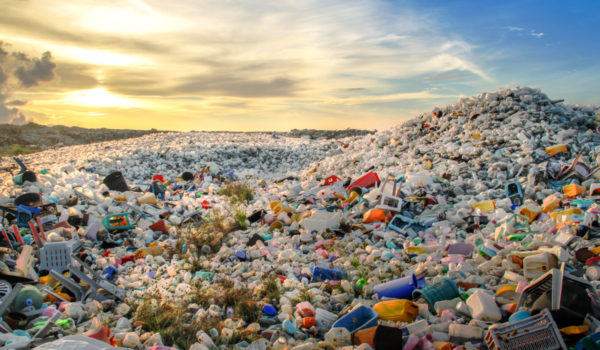The Global Research and Innovation in Plastics Sustainability (GRIPS) digital conference, held in March 2021, has highlighted ways that the UK could look to reduce the amount of plastic that ends up in landfill, being incinerated or becoming waste in the environment.
Focusing on a report produced by the United Nations Environment Programme, highlighting that “no global agreement exists to specifically prevent marine plastic litter and microplastics or provide a comprehensive approach to managing the lifecycle of plastics”, one particular panel at the digital conference discussed the need for a future global agreement to tackle plastic pollution.
The panel, which included academics from the University of Portsmouth’s Revolution Plastics programme as well as campaigners for a plastic free future and plastics manufacturers, concluded a number of key points that any future agreement on plastic pollution would need to include to be successful, including:
- A focus on the full lifecycle of plastics, not just plastic waste.
- Designing sustainability into products and encouraging innovation to accelerate a circular economy.
- Providing financial assistance to support innovation, such as modern infrastructure for the rapid collection and sorting and recycling of materials.
- The scaling up of Extended Producer Responsibility schemes, particularly in less developed countries.
- Standardisation of additives in plastics to enable easier collection and re-use and further research into their impact on human health.
- Facilitating research and sharing knowledge. Global agreements don’t exist in isolation but are supported by research bodies, which allows implementation to adapt as more evidence comes forward.
- Engaging citizens and raising awareness of the plastic problem to encourage sustainable behaviour.
- Finally, it must be legally binding. We need a political commitment to tackle this international issue. Any global agreement should provide leadership to give nations a sense of direction and shared ownership.
Focus on Plastics Lifecycle & Circular Economy
The focus on the full lifecycle of plastics, not just plastic waste, follows a greater understanding of the production process behind plastics, which can cause harmful pollution.
On top of this pollution during the production process of plastic, issues remain with plastics at the end of their lifecycle, as it is thought that 91% of all plastics produced have never been recycled.
It is understood that a large number of plastics end their lifecycle in the environment, with an estimated eight million tons of plastic waste entering the seas every year.
A final crucial element of the GRIPS’ panel is calling for a standardisation of the additives in plastics and their impact on human health, which follows a study by the Environmental Science: Water Research & Technology journal that found plastic drinking pipes could be a source of water contamination.
Plastic in the Built Environment
While plastic packaging and other consumer-based plastics is often the focus for panel discussions and research, it is important to highlight all industries driving demand for plastic, especially in areas where plastic usage is on the rise.
The built environment is one such example, with plastic becoming increasingly prevalent in construction over the last 25 years. It is thought that construction is now the second largest consumer of plastic behind retail.
It is within the built environment that the key circular economy proponent of the GRIPS panel’s recommendations can be implemented.
Sustainable materials, such as copper, can be used in place of plastic pipes to ensure that the construction industry is pushing toward a circular economy.
Thanks to its ability to be infinitely recycled without any loss of performance or properties, it is believed that at least 65% of all copper mined remains in circulation. On top of this, around half of Europe’s copper demand is currently being met by recycled materials.
Finally, recycling copper uses 85% less energy than mining raw material, once more highlighting its position as a prime example of a sustainable material for the future circular economy.
With more discussions around the lifecycle of plastics expected in the future it is important that materials such as copper and other sustainable alternatives continue to be considered as a key driver in the move to a circular economy.

